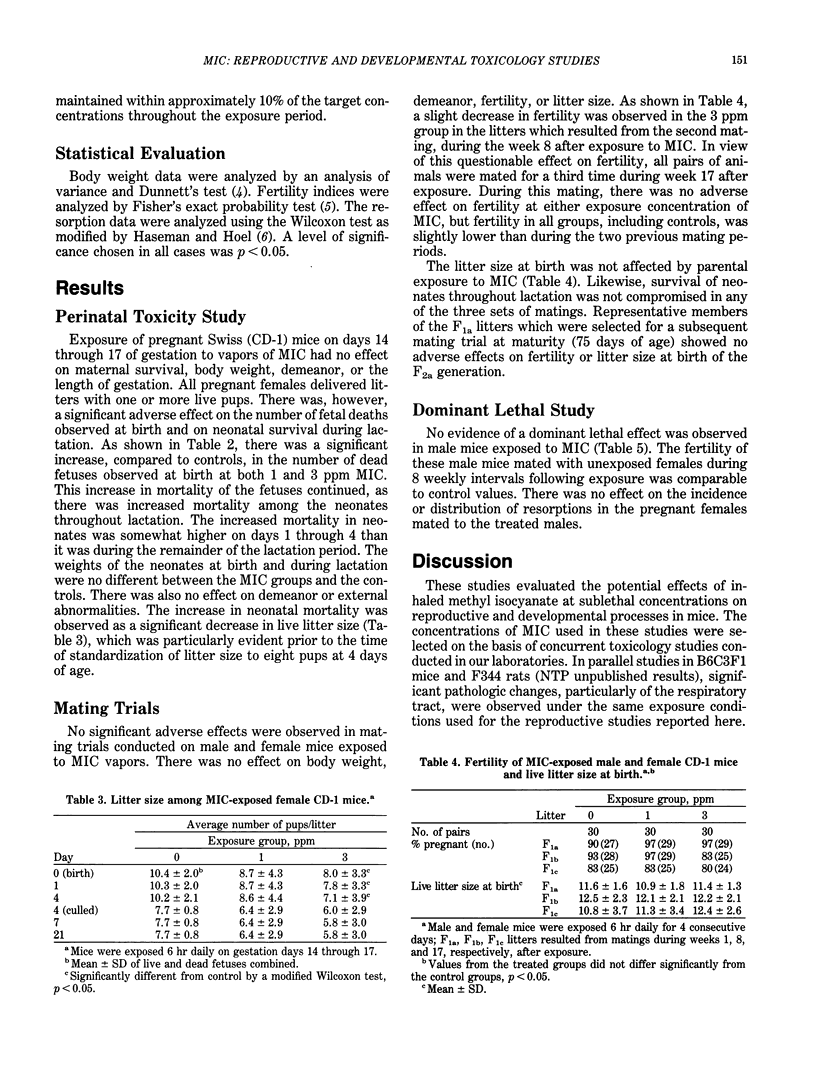Abstract
Studies were conducted in Swiss (CD-1) mice to evaluate the potential of inhaled vapors of methyl isocyanate (MIC) to affect reproduction and development. Inhaled MIC at concentrations of 0, 1, or 3 ppm, 6 hr per day during days 14 through 17 of gestation caused a significant increase in the number of dead fetuses at birth and caused a significant decrease in neonatal survival during lactation. In contrast, exposure of male and female mice to 1 or 3 ppm given 6 hr per day for 4 consecutive days had no effect on reproduction during mating trials conducted 1, 8, and 17 weeks after the exposure period. Similarly, there was no evidence of a dominant lethal effect in exposed male mice.
Full text
PDF



Selected References
These references are in PubMed. This may not be the complete list of references from this article.
- Adkins B., Jr, O'Connor R. W., Dement J. M. Inhalation exposure system used for acute and repeated-dose methyl isocyanate exposures of laboratory animals. Environ Health Perspect. 1987 Jun;72:45–51. doi: 10.1289/ehp.877245. [DOI] [PMC free article] [PubMed] [Google Scholar]
- KIMMERLE G., EBEN A. ZUR TOXICITAET VON METHYLISOCYANAT UND DESSEN QUANTITATIVER BESTIMMUNG IN DER LUFT. Arch Toxikol. 1964 May 27;20:235–241. [PubMed] [Google Scholar]
- Shelby M. D., Allen J. W., Caspary W. J., Haworth S., Ivett J., Kligerman A., Luke C. A., Mason J. M., Myhr B., Tice R. R. Results of in vitro and in vivo genetic toxicity tests on methyl isocyanate. Environ Health Perspect. 1987 Jun;72:183–187. doi: 10.1289/ehp.8772183. [DOI] [PMC free article] [PubMed] [Google Scholar]


